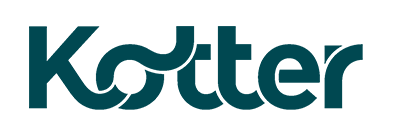Our journey to help clients find new ways of working and develop high-performing teams began with a simple question. What do great teams do exceptionally well? We combed through mountains of research, talked to dozens of clients and reflected back on our experiences coaching hundreds of teams in diverse contexts develop new ways of working. Kotter’s Thriving Teams approach captures the six attributes that successful teams demonstrate: three oriented around how work gets done and three around the ways in which team members relate to one another.
[pdf-embedder url=”https://www.kotterinc.com/wp-content/uploads/2020/09/Thriving-Teams-Model_2020.pdf” title=”Thriving Teams Model”]
Thriving Teams Model Introduction | The Six Attributes of Successful Teams
We begin with an overview of the Thriving Teams model: How to Fast Track Any Team to Success. Author, Daniel Dworkin, shares how a conversation about the plodding pace that most teams take to move from storming to performing inspired deeper thinking about how to accelerate that process. How do teams benefit from adopting certain behaviors and new ways of working? He introduces two broad focus areas for helping teams to thrive: getting better at tasks and nurturing stronger relationships. After describing at a high level each of the attributes associated with Thriving Teams, Dworkin highlights the importance of focusing on both engaging the heart and appealing to the head to fully capitalize on teams’ collective potential.
How Work Gets Done:
Align: Creating a Shared Sense of Your Team’s Opportunity and How to Realize It
The coronavirus has changed the game that many organizations are playing. Since teams are the unit by which work gets done, there is an ongoing need to recalibrate how they collaborate. In this article, Dworkin highlights how teams can use this crisis as a catalyst to get clear on why teams do their work, how they will measure success, and what that work actually entails. He then suggests four ways to drive up alignment on an ongoing basis, whether in crisis conditions or not.
Achieve: Cultivate a Winning Mindset and Behaviors
The predominant way that organizations assess the success of any team is by the results they are able to achieve. In this Forbes piece, Dworkin identifies how to develop a winner’s mindset and the associated behaviors that will make a positive impact on any teams’ success.
Adapt: Test, Learn and Pivot in an Ever-Changing Environment
All teams aspire to be adaptable, but few are actually able to continuously change gears in today’s volatile business environment. New ways of working do not easily replace institutional habits. In this final article, Dworkin describes the psychological dynamics that make adaptation – any change along a continuum of possibilities to help a team attain their goals – challenging. Spoiler alert: even small changes can be difficult. He suggests three ways to support more effective adaptation by focusing on aligning words and actions, exploring the emotional side of change, and teaching team members how to run good experiments to normalize success, failure, or a result in between.
How Team Members Relate To One Another:
Trust: Building Understanding of Self and Appreciation of Others
This article explores the Trust attribute. Building off of Covey and Merrill’s Speed of Trust research, Dworkin highlights two types of trust that are particularly relevant to teams: self-trust and relationship trust. To build trust in ourselves, the author suggests ways to develop self-awareness, tuning into personal strengths and areas of opportunity. He asserts that relationship trust develops over time as colleagues repeatedly demonstrate care, empathy and responsibility for each other. Finally, he shares a simple approach to building trust in oneself and one’s team members.
Cohere: Developing Authentic, Caring Relationships
Building emotional bonds with teammates matters – and there is data to substantiate the value of building deep relationships. Reviewing a Google case study and sharing themes from the latest research on the importance of meaningful connections at work, Dworkin and former colleague, John McBratney, explore how deeper relationships yield better results. Specifically, they demonstrate the direct connection between how team members relate to one another and the quality of their output and level of job satisfaction. They then suggest practical ways that team leaders may cultivate relationships to help their teams develop new ways of working to achieve incredible things – and be happier doing it.
Belong: Balancing Respect for Individual and Group Identities
Co-authors Daniel Dworkin and Nick Petchek explore in this Forbes piece the ways that high-performing teams honor team members’ uniqueness while also cultivating a deep sense of collective identity. They suggest how team leaders can nurture a strong sense of belonging by focusing on the rituals, artifacts and language that bind people together and enable them to achieve feats that would be unattainable by any individual team member working alone.
Discover more with Kotter.
Learn more by viewing our Research + Insights page.


